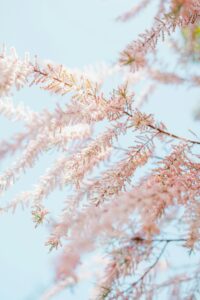
Adapting Tree Care to Toledo’s Climate
Whether they’re cleaning the air, absorbing pollutants, cooling the streets or saving the planet, trees benefit us in many ways. And they do it all by pulling carbon dioxide — the biggest greenhouse gas contributing to climate change — out of the atmosphere and holding it there for long periods of time.
1. Watering
Increasing tree canopy is essential to protect water quality and the city’s infrastructure. However, if the trees aren’t properly cared for, their benefits can be diminished.
Watering is a critical part of tree care, especially during drought periods. A deep soaking once every two weeks is recommended. Water should be applied slowly to a large area around the root zone, avoiding runoff. Water should reach the upper 18 inches of soil, where roots absorb nutrients and moisture. To avoid overwatering, test the soil by inserting a screwdriver into the ground. If it feels cool and moist, irrigation is not needed.
Toledo’s street trees, crucial for the environment and community, intercept 254,060 cubic feet of stormwater annually, saving taxpayers $5.1 million. This insight, from Ohio State University research, highlights the significance of tree service in Toledo, Ohio. Beyond cost savings, trees elevate property values, reduce “heat islands,” and offer shade to homes and businesses. Additionally, by extracting carbon dioxide from the air, trees play a role in slowing global warming.
2. Fertilization
The process by which fertilisation takes place within the reproductive structures of plants (the ovules of gymnosperms and angiosperms). Fertilization is an important part of tree care because it supplies the minerals that trees need for photosynthesis.
Without soil testing, it is easy to give your plants more fertilizer than they need. Excess fertilizer can wash into water systems and cause harmful algal blooms in lakes and rivers. That is why it’s important to test your soil and only fertilize in the fall and spring.
Many of the same reasons that soil needs to be tested are the same reasons to fertilize organically – a nutrient-rich compost can help prevent nutrient runoff and build healthy soils. Long-term organic fertilization increases soil humus and nitrogen reserves while also improving the pH of the soil, making it less acidic.
3. Pruning
Tree pruning is a key part of tree care for property owners. It is used to improve health, safety, and aesthetics. It also helps prevent damage to buildings, structures, cars, and people. Pruning removes dead or diseased plant parts and reduces the risk of breakage from winds. It also helps trees grow healthier.
When pruning a plant or tree, it is important to make sure the shears are held properly. It is also necessary to avoid cutting in close proximity to the trunk of the plant. This allows the plant to compartmentalize its wound, limiting the potential for pathogen intrusion and decay.
There are several different types of pruning. Thinning involves removing a large number of live branches from the base of a plant. Raising prunes low-hanging branches. Topping is when most of a plant’s volume is cut back to create headspace for walkways, cars, and entryways. It is often used on young plants that are being trained to grow in specific ways.
4. Protection
Taking care of our natural habitats benefits more than just wildlife. It also impacts air quality. Increasing the number of native plant species and decreasing invasive ones helps to restore the health of our waters, soil and atmosphere.
Planting trees in densely populated areas decreases the risk of flooding, and can reduce the impact of heat islands. It also lowers the amount of energy required to cool homes.
Trees help to pull carbon dioxide, the major greenhouse gas contributing to climate change, out of the air and store it for a long time. This process is known as carbon sequestration.
With a goal of planting as many trees as the population in Toledo, Tree Toledo is working to make our city greener one seedling at a time. They offer free seedlings to the public, as well as to schools, churches and the Zepf Center. They also sell them at local festivals and the Farmers Market.


